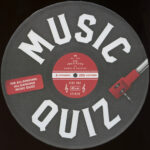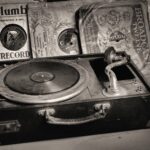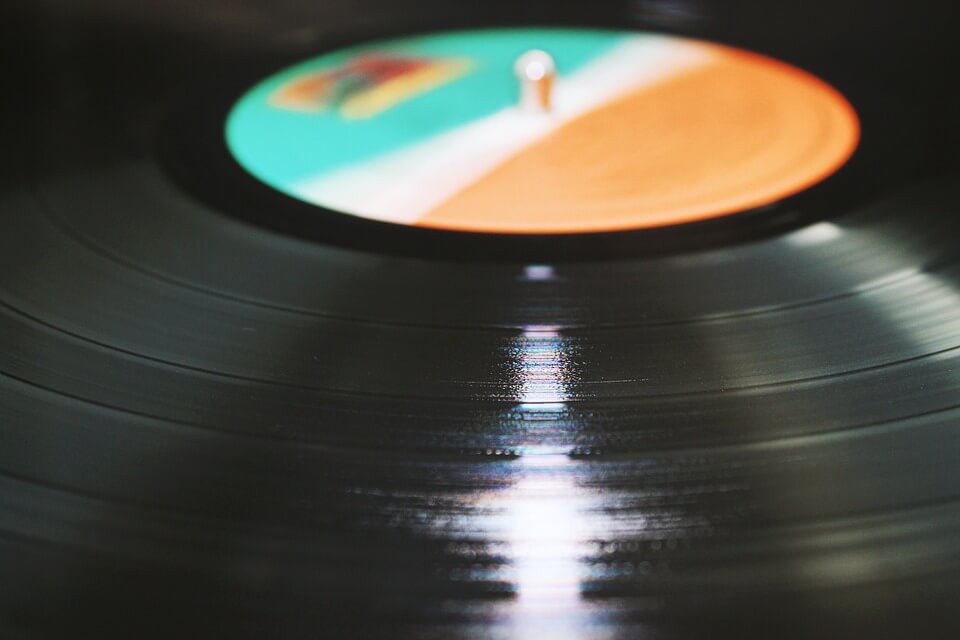Most of us have crates of old vinyl records down in the basement or up in the attic. We won’t part with our record collection because we love the music and the vinyl albums are tangible reminders of our youth. At the same time, most of us harbor vague hopes that somewhere in the pile are one or two rare records worth thousands of dollars.
The first two reasons are great. This article will tell you why the third is an even longer shot than you probably already think it is — and that you should look anyway because it’s fun and brings back some great memories.
First, consider the sheer numbers. This may come as a shock — sit down if you are standing — but you’re not the only one who bought “Europe ’72,” “They Only Come Out at Night” or “Electric Ladyland.” They are old, but there are millions of each out there, mostly in other folks’ basements and attics. As with stamps and coins, old doesn’t equate to valuable.
A second factor that suggests that your records probably are more or less worthless — sorry if that seems harsh — is the condition their condition is in. In general, the vinyl albums must be in mint condition or close to it to get even a second look by serious record collectors. That’s usually not the case. Most folks’ record collection are like us — a bit battered and bruised after all these years.
Collectors, by the way, are not aging hippies sitting around trying to put a few bucks together while reliving old times. They are shrewd and serious professionals and what they do is close to an exact science. You won’t fool them. Collectors have precise approaches to distinguishing between mint, good and other levels of condition. Just normal use alone (not to mention the old coin-on-the-tonearm trick) strongly limits vinyl record value.
— Do research on the record, including which pressing you own. Don’t discriminate between well known and obscure artists and records
— Clean the record using safe methods. Cleaning vinyl albums is different than cleaning windows or counter tops. Be very careful
— Is the record in mint condition? Good condition? These terms mean specific things. Educate yourself
— Contact multiple collectors and in other ways employ typical due diligence[/su_box]
I guess I’ve managed to kill the attraction of this post, but please read on anyway. It is fair to say that “little chance” is not synonymous with “no chance.” We’ve all read the stories of folks who find a real Dutch Masters painting at a garage sale. These things happen. They certainly are nothing to count on. But if you love vinyl records, the world of rare record collecting is interesting.
A lot of the fun stories are about mistakes.
“The Freewheelin’ Bob Dylan,” his second album, initially was released with four tracks that quickly were switched out, according Recordmecca:
This is one of the rarest and most collectible records in the world. Approximately 20 to 25 mono copies and two stereo copies are known to exist. A stereo copy sold for $35,000, and a mint mono copy would fetch nearly that, though none in that condition has ever surfaced.
Another interesting mix up involves a Blue Note album referred to as “Hank Mobley 1568” or “BN 1568.” Tenor sax player Mobley is a household name in the jazz world, but not well known to the general public. The reason the album is valuable has little to do with his great skills, though. The album sold for £7,300 — a bit more than $11,000 — apparently in 2015 (I can’t nail the date down definitively).
The reason? According to The Vinyl Factory, the culprit was the person who orders stationary:
So what makes Mobley’s solid, soulful but unspectacular hard bop outing so valuable? The devil here is in the detail. With somewhere between 300 and 1,000 copies thought to have been pressed, the first pressing of BN 1568 is not only one of the rarest in the Blue Note catalogue, but is also one of the only to have different addresses for Blue Note on the label. The split is said to have taken place as Blue Note ran out of labels, pressing one side with the standard 47 West 63rd NYC and the other with 47 West 63rd New York 23.
Intentional switches also lead to collectibles. The Rolling Stones seem to have specialized in these quirky album changes. The original cover of “Beggar’s Banquet” featured a bathroom wall (that apparently was considered a bit lurid for the times), the original cover of “Their Satanic Majesties Request” featured a real reflector and the original cover of “Sticky Fingers” featured a real zipper. All were swapped out. Though those particular albums likely are not worth too much because so many of the early versions were released, the changes illustrate the type of things that control what a record could be worth — and what makes the collectibles industry so much fun.
These are not quite the Inverted Jenny stamp or the Honus Wagner baseball card, but they all are interesting. It also shows that smallest of missteps can lead to riches down the road.
What are the Most Valuable Vinyl Records?
Another positive thing to say is that are lots of valuable albums. Experts’ lists vary greatly. Here are examples from Discogs and Louder Sound. That means that there are lots of good stories to be heard.
The Value of Vinyl Records: A Mix of Articles and Resources
> Rockaway: Good looking commercial site
> Collectors Weekly: All things collectible
> RareRecords.net: Lots of info
> Discogs: What condition is your condition in?
> Discogs: Cutting to the chase: What’s it worth?
> Classic 45s: Focus on 45s
> WikiHow: More on 45s
> Value Your Music: Record, CD and cassettes prices
> Cash for Records: Buying and selling online
> Popsike: Vinyl auctions archive
> Recordmecca: Lots of music collectibles
> Wax Times: They wax poetic about wax
> Victrola: A vendor weighs in
> DJ Records: Record companies employ vinyl fans who know their stuff
> Record Grouch: Seems more focused on used items than collectibles
> Sit and Spin Records: Buy, sell, trade
> Goldmine: Call themselves “The Music Collector’s Magazine”
> Jazz Collector: A price search tool
> Electrohome: More on record condition
> Devoted to Vinyl: The headline tells it all. Online and real life
> Vinylnet: Prices, from the U.K.
> Old Man Vinyl Records: Good name, says it’s new
One thing that is not surprising is that rock and roll albums dominate the lists of valuable vinyl. Vinyl predates the rock era, but vinyl ruled during its heyday. There are classical, jazz and old blues records — many in the 78 rpm format — that make the lists. But the core is rock.
I’d like to end (uncharacteristically) with a personal anecdote that, like the Dylan and Mobley stories, illustrates how easily potentially valuable albums drift into the mainstream.
My dad was an attorney who in the mid-1960s had an office in The Squibb Building on Fifth Avenue in Manhattan. One day, a man from down the hall came in and asked for a small favor—accept a package, borrow some carbon paper (look it up, kids) or something along those lines. A few days later, the man returned and gave dad a copy of the incomparably beautiful 1956 Louis Armstrong/Ella Fitzgerald album as a thank you. I lost track of the record (which was in anything but mint condition).
Years later, I became an Armstrong fan and realized that the man from down the hall might have been Joe Glaser, Armstrong’s long-time manager. If so, the copy given my father likely was some sort of special or unique pressing. Glaser didn’t run over to a record store and pick it up. I tweet/asked Ricky Riccardi – probably the foremost Armstrong historian – about the theory. He said that Glaser indeed did have an office in the Squibb Building, which strongly suggests that I guessed correctly.
A million of these little incidents – imagine the same scenario in which the gift was a limited pre-release copy of “Dark Side of the Moon,” “The White Album” or “Tapestry” – shows how collectibles enter the mainstream.
An article covering vinyl album collectibles should mention the odd tale of Wu-Tang Clan’s “Once Upon a Time in Shaolin” album, if only because it’s the highest price ever paid for a record. But it’s only worth a mention because the affair doesn’t illustrate the real world of vinyl record collecting.
HMV tells the familiar story well: Pharmaceutical executive Martin Shkreli — who had incurred the ire of just about everyone by hiking the cost of anti-HIV drug Daraprim by more than 5,000% upon acquiring the manufacturer — bought the only copy of the record for $2 million. Shkreli, who may have had the weirdest 15 minutes of fame in American history, ended up in jail for securities fraud. I imagine he still owns the album, but if you spot it at a garage sale, pick it up.
The bottom line is that the vinyl you own is likely worthless, especially if it is not in mint condition. That said, the stories of how these records came to be worth so much are interesting and bring back a lot of pleasant memories. Those who love music and its delivery via vinyl can have some fun rummaging through their collections in hopes of finding a gem. But do so to have fun, not make money.

















Recent Comments